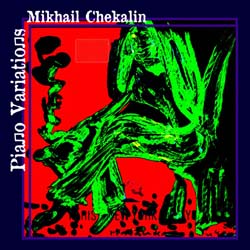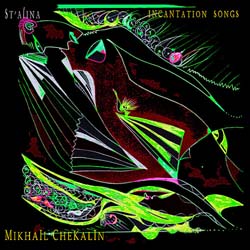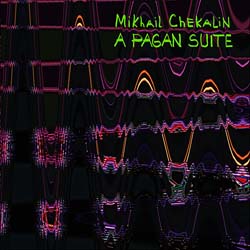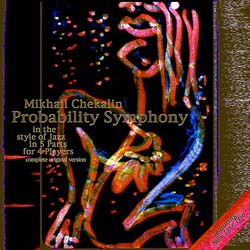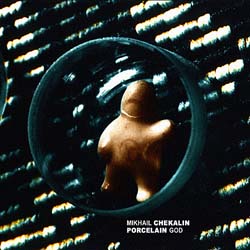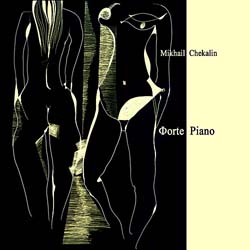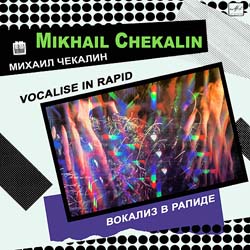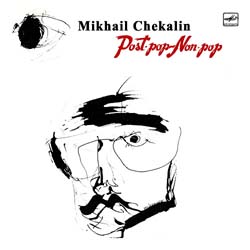|
The Story so far...
1970's- FM radio, Alternative Magazine & 1st US Indie Distributor of Euro Rock
1980's- D.I.Y. LP + Cassette & CD label
1990's- Distribution via the WWW
2010- Eurock.com ~ Multimedia Podcasting, Interviews & Reviews.
Label & Artist Submissions Accepted
for Review...
|
Webzine
Exclusive Post
Millennium Interviews
w/ Musicians &
Producers
Pioneers of Euro
Electronic
Space,
Progressive, Experimental Music
Past ~ Present ~ Future!

Podcast
A Special New Feature!
Subscribe & Keep Up with the
Latest New Releases
MP4 Excerpts
Interviews w/ CON, Cluster,
Damo, Mani & More...
Download from:
Eurock.com
or
Apple iTunes
M ikhail
Chekalin
Gallery
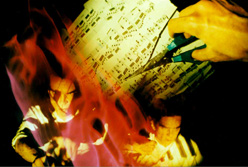
Interview
Music
Art
|
Klassik Krautrock

Amon Duul 2
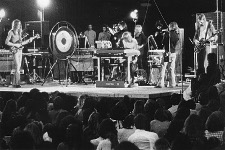
Ash Ra Tempel Live
Paris

Manuel Göttsching
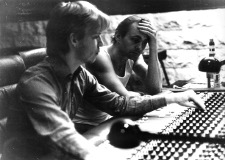
Baumann & Roedelius
in Studio '78

Can
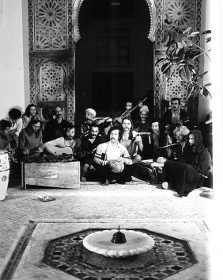
Embryo in Tangiers
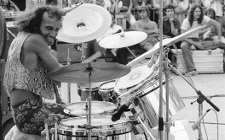
Guru Mani
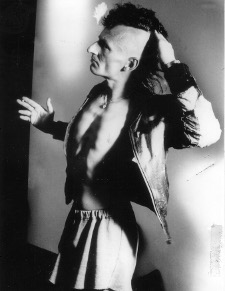
Klaus Dinger
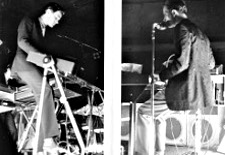
Ralf & Florian - LIVE USA 1975

Bartos & Fleur - LIVE USA 1975
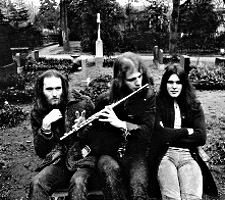
Mythos

Popol Vuh

Conny Viet
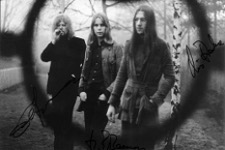
Tangerine Dream OHR
Era
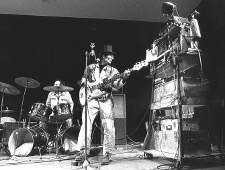
Uli Trepte Spacebox
LIVE
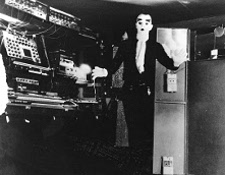
CON

Wolfgang Sequenza
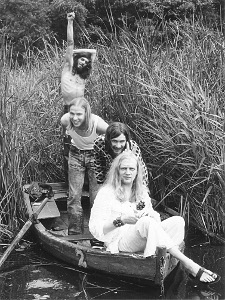
Wallenstein

Klaus Schulze
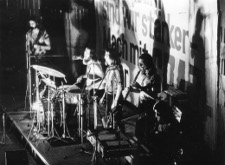
Floh de Cologne
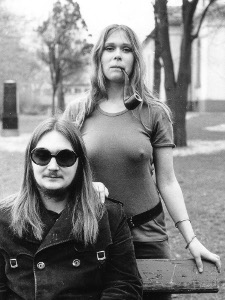
Emtidi
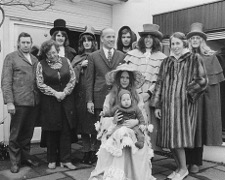
Hoelderlin

Manuel & Rosi
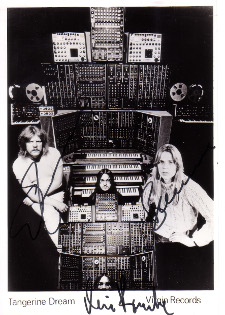
Tangerine Dream Virgin Era

Witthuser & Westrupp
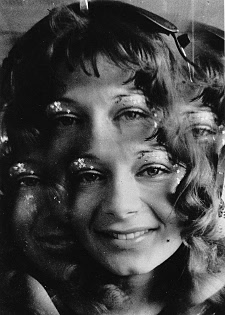
Starry Eyed Girl
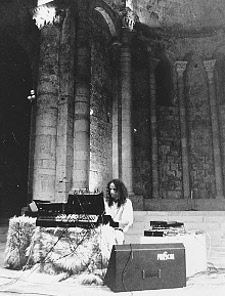
Rolf Trostel
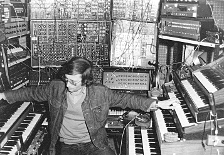
Rudiger Lorenz
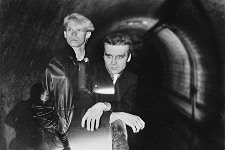
Din A Testbild
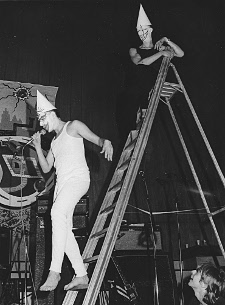
Der Plan
Artistes Français
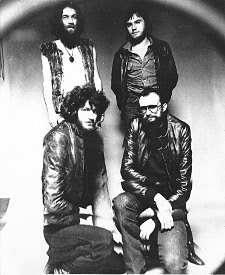
Lard Free
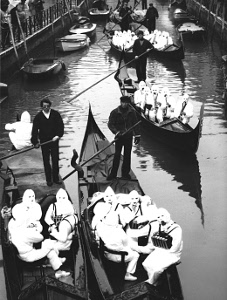
Urban Sax
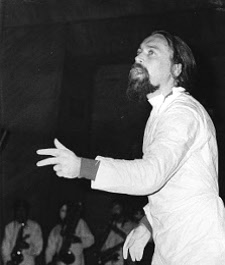
Gilbert Artman
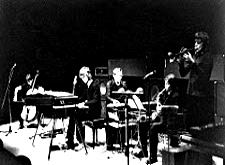
Art Zoyd
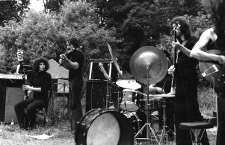
Univers Zero
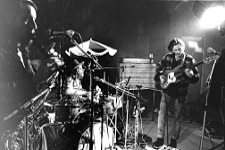
Etron Fou Leloublan
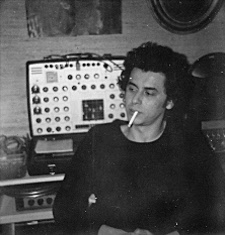
Pascal Comelade

Armand Miralles
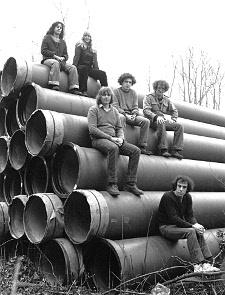
Eskaton
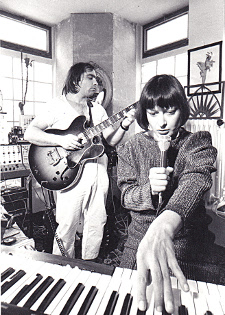
Annanka et Ivan -
Fondation
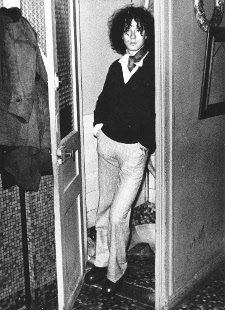
Thierry Muller -
Ilitch
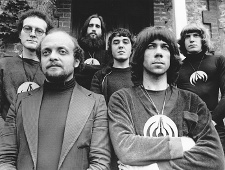
Magma
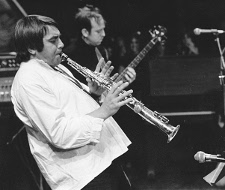
Yochk'o Seffer
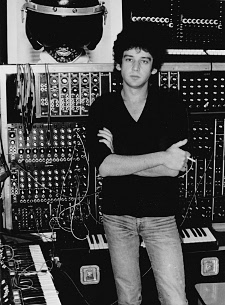
Richard Pinhas
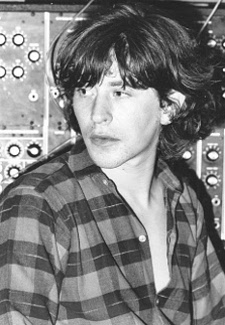
Patrick Gauthier
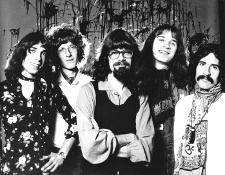
Pulsar
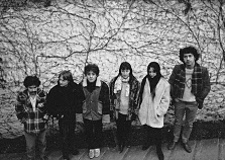
Shub Niggurath
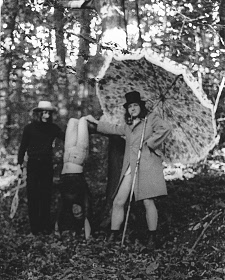
Pataphonie
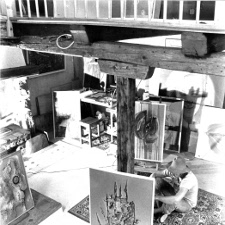
Andre Baldeck - Decko
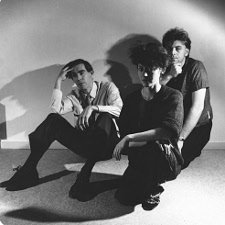
Déficit des Années
Antérieures
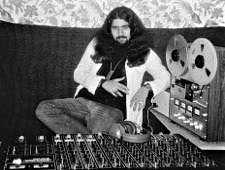
Didier Bocquet
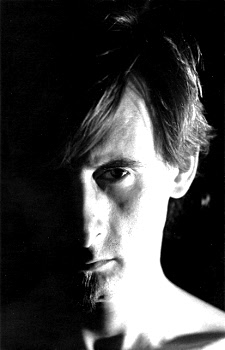
Dominique Grimaud -
Video Aventures
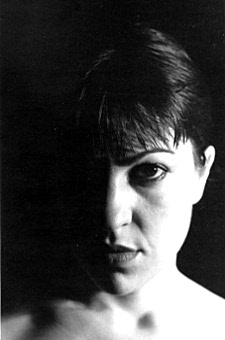
Monique Alba - Video
Aventures
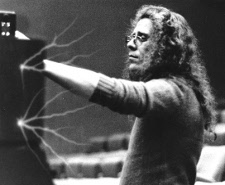
Patrick Vian - Red
Noise
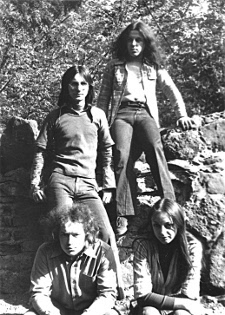
Wapassou

Zazou et Racaille -
ZNR
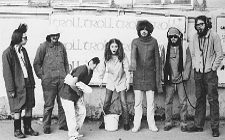
Jean Pascal Boffo -
Troll
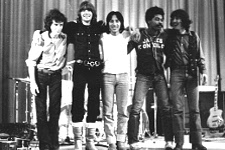
Surya
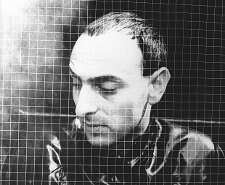
Bernard Szazner

Igor Wakhevitch
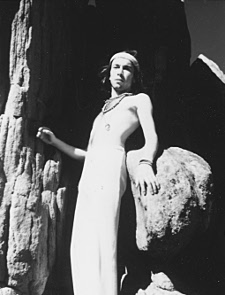
Xolotl
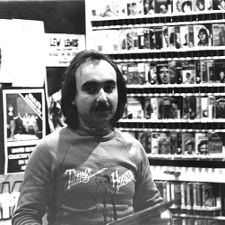
Robert Frances -
Sirenes Musique
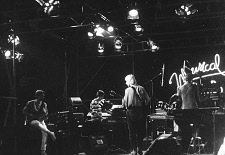
Neuronium & Ashra
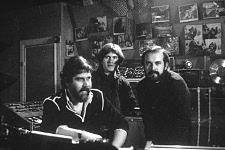
Neuronium & Vangelis
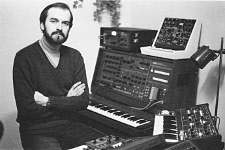
Michel Huygen -
Neuronium
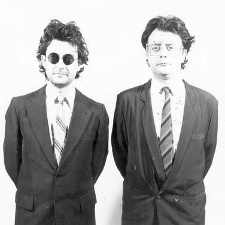
Juan Crek & Victor
Nubla - Macromassa
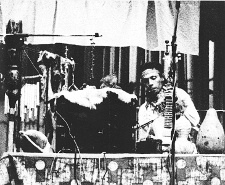
Luis Perez
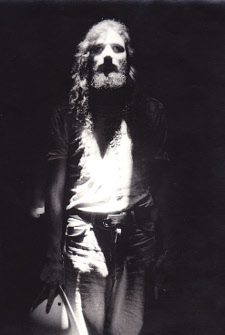
Carlos Alvarado - Via
Lactea
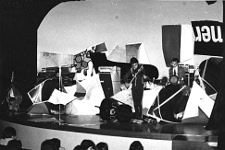
Decibel
|
|
Light
& Sound by
Mikhail Chekalin

Chekalin Photo
Archives 1987
Back to the
Future ~ Post-Realism
In the late 60's and 70's, postmodern art and music were a
progressive step away from conformity. Later there was an attempt to merge
those forms with a lifestyle more attuned to consumption and relaxation. Now
a new norm has deflated the whole scene, protest centers around bringing
back fundamental values. In fact, Post Realism centers on the idea of
getting back to the avant-garde culture and traditions of the XX century.
In today's world, true Art does not occupy the place it did
in the last century. At that time art was a form of religion, the role of
the artist in society was equal to, and even surpassed the role of the
writer, philosopher, and especially politician. Since then, Art has fallen
from its pedestal. Post-modern art does not even attempt to work as cultural
protest against the present order of things; now instead it serves as a
utilitarian sonic background, striving instead to become a form of
entertainment.
With the onset of the era of consumption and mass culture,
artists must uphold the value and purpose of the Art like never before. An
artist is someone who reflects reality. To paraphrase a key phrase of
Stanislavski: "Artist - this is not a diagnosis; the artist is the one who
sets the diagnosis to the society."
Chekalin continues this tradition of 20th century Art. His
music directly epitomizes this. It is not socialist realism, but a form of
surrealism created in the context of modernity. It may seem strange, yet it
is certainly true that Art of XX century was futuristic and has proven to be
more modern than that of XXI. Digitization and advanced technology cannot
replicate true human artistic creativity, which when manifested becomes
revolutionary by its own nature. The idea of social revolution may be gone,
but the inspiration that art (and first of all music) can provide are
eternal.
MIR Records
Catalog 2012
"Chekalin's Music is like Shostakovich, for the Electronica Generation"
DVDs
|
Poruganie Patsiphica
For More INFO:
Poruganie Patsiphica
Poruganie Patsifika
was the first MIR Records DVD release by Mikhail Chekalin. It is a
stunning multi-media DVD. Subtitled
Post Symphony in 9 Parts,
it serves as the
soundtrack for an avant-garde artistic presentation of the paintings of
the famous Moscow 20. They were a group of 20 underground artists
who exhibited on Malaya Gruzinskaya Street, circa the late 1960s - 1980s
without official permission and were ultimately banned with most of
their works now residing in private collections and museums outside the
country. |
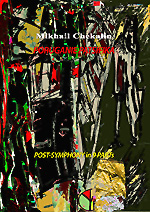 |
|
Video History of Light & Sound Vol. 1
For More INFO:
Light & Sound Vol. 1
The Video History of
Light & Sound V.1
features Light and Sound collages with Music that were filmed at
installations during the 1970s and 1980s. All music was performed by
Chekalin. The visuals were created in accompaniment by his team of
artistic collaborators. |
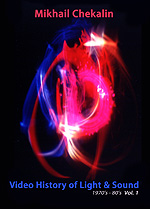 |
|
Video History of Light & Sound Vol. 2
For More INFO:
Light & Sound Vol. 2
The Video History of
Light & Sound V.2
features Animated & Live documentary film as well as more recent
Light & Sound Music collages. It also contains perhaps the historical
capstone of his work the live concert by the St Petersburg Philharmonic
in 1997 performing Chekalin's latest Post-Symphonic work at that time. |
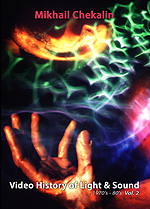 |
|
Mikhail Chekalin ALIVE
@ 50
For More INFO
Alive @ 50
Mikhail
Chekalin ALIVE @ 50 Recorded in
May 2009 at a private birthday celebration with a few of his friends.
The 3 Live pieces he performed rank as perhaps the best examples of
electronic music Chekalin has done to date. Experimental stylistically they are
also filled with deep spatial explorations, darkly ambient undertones
and heavy symphonic passages. Added film effects at times give it a 3D
dimensional effect that you can enjoy using the old red & blue dual lens
glasses. ALIVE @ 50 is a truly surreal & sonically entrancing
experience. |
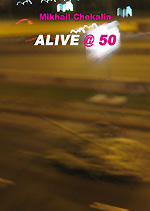 |
CDs
|
MCD1000 Poruganie Patsiphica
[2005]
Music Samples:
<MChekalin1MP3>
For More INFO:
Mikhail Chekalin
The most recent music Mikhail Chekalin
at times
shows traces of Soft Machine Third,
as well as recalling
Klaus Schulze most adventurous neo-classic works. Alternately, other
passages
evoke compositionally the emotional
majesty of Vangelis and spiritual essence of Christian Vander and
Offering. Mikhail Chekalin
makes Post Symphonic Music that transcends the boundaries of
Electronics, Neo-Classical & Jazz Fusion! Poruganie Patsiphica
is a stunning work that blends that spirit of the avant-garde with
elements of contemporary spatial fusion of electronic tendencies. |
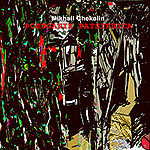 |
|
MCD1001 Untimely [2007]
Music Samples:
<UntimelyMP3>
For More INFO:
Mikhail Chekalin
Chekalin today is making music that is was certainly at the forefront
of not only Russian electronic music, but the multi-media areas of
experimental neo-classical music around the world as well. Now
freed from the Cold War vacuum chamber they offer a unique audio visual
experience for all to experience.
The album, Untimely is a stunning
Post Symphonic work
that transcend the boundaries of Electronic, Neo-Classical & Jazz
Fusion! |
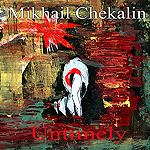 |
|
MCD1002 Paradigm
Transition
[2007]
Music Samples:
<ParadigmMP3>
For More INFO:
Mikhail Chekalin
Mikhail
Chekalin has been making music in Russia for almost 40 years. He came of
age during the ascendancy of pop music, while simultaneously
immersing himself in studying works by the classical masters and great
philosophical thinkers, past and present. Living and working under a
restrictive social order, during a time of great change, he was
determined to create music that was also art. The album Paradigm
Transition reflects his personal artistic and emotional dynamic
in the music, which is alternatively intensely overpowering and at times
beautiful. It offers all who hear it as well their own truly
personalized and unique listening experience. |
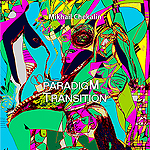 |
|
MCD1003 Catharsis [2010]
Music Samples:
<Catharsis1MP3>
<Catharsis2MP3>
For More INFO:
Mikhail Chekalin
The new CD
Catharsis features recent music,
recorded in 2010, that without doubt expands the range of his musical
dynamic. A concept work in 9 Parts it combines all the elements of his
style, post-symphonic classical, jazz, electronic textures with a hint
of rock, weaving them into a new musical fusion that is both unique. The
album centerpiece is the 26:32 piece, In Memory of Fascist Victims,
Commemorating the 65th Anniversary of Victory in WW II. Musically, it
is a stunning new form of music where various influences flow freely
through changes in theme and musical texture that become intoxicating in
their tone, timber and creative complexity. Subtitled, Special
Soundtrack, it plays like a pictorial soundscape catching the listener
up in its continual ebb and flow. Complex for sure, it is also highly
listenable as well capturing your attention to the very end. If you have
not heard Chekalins music before, this is the place to start! |
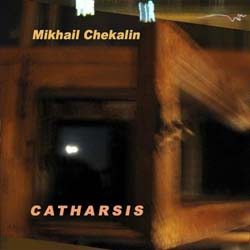 |
|
Historic Edition Vol. 1
[1970s-1980s] (Previously
Unreleased)
MCD1005 A Well Prepared Electric Organ
For More Information
Mikhail Chekalin
Mikhail Chekalin has been one of the most influential
modern composers of the last 35 years in the former USSR, now Russia.
His work was experimental; in fact, his raison d��tre was specifically
to break new ground stylistically. He worked outside the boundaries of
established culture, while at the same time breaching its borders when
possible to expose his art and music to the people at large. The
Historic Edition features 6 CDs that document unreleased music
recorded during his early period. |
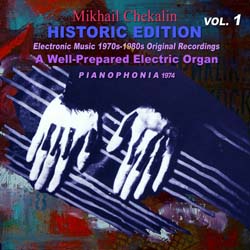 |
|
Historic Edition Vol. 2
[1970s-1980s]
(Previously
Unreleased)
MCD1006 Background-Underground
For More Information
Mikhail Chekalin
Over the span of his long career, Chekalin has produced
some 40+ works that range the sonic spectrum for Post Pop,
to free jazz, electronic, and Post Symphonic. During the
1980�s, he made a breakthrough of sorts when the state owned Melodiya
label released several albums of his music. For the most part, however
he created art and produced music underneath the radar. |
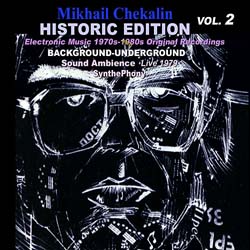 |
|
Historic Edition Vol. 3
[1970s-1980s]
(Previously
Unreleased)
MCD1007 Free Piano
For More Information
Mikhail Chekalin
Between 2005 and 2010, MIR Records in the USA released
eight productions devoted to works by Chekalin. The label produced four
CDs and four DVDs bringing his work to an entirely new worldwide
audience. The MIR label now embarks on an ambitious new project by
beginning the release of a series of CDs, titled the Historic
Edition, featuring previously unreleased material from his
personal archives. |
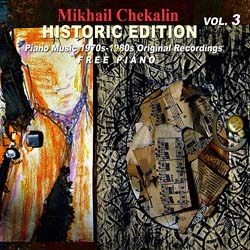 |
|
Historic Edition Vol. 4
[1970s-1980s]
(Previously
Unreleased)
MCD1008 Just Bits And Pieces
For More Information
Mikhail Chekalin
The albums released in the
series will focus on music from the middle of the 1970s through the
early 1980s. It will not include any of the previously available
Melodiya releases, but instead will feature material previously not
released in any way. After that period of his work is documented, the
reissue series will continue with further releases featuring Melodiya
albums and unreleased music from the later 1980s & 1990s. |
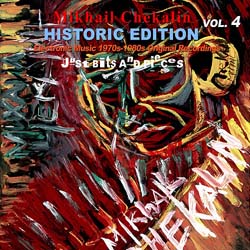 |
|
Historic Edition Vol. 5
[1970s-1980s]
(Previously
Unreleased)
MCD1009 Open Piano
For More Information
Mikhail Chekalin
As the listener experiences Chekalins musical
progression through the years, they will in fact be hearing an audio
documentation of the history of experimental music from the Eastern
Bloc. For artists there, music and art was not about making money, but
instead keeping their creative spirit alive. In Chekalins case that was
certainly true and that social dynamic clearly is evident in the
intensity and emotional power of this music. |
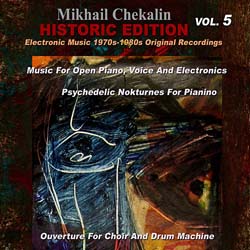 |
|
Historic Edition Vol. 6
[1970s-1980s]
(Previously
Unreleased)
MCD1010 Tercium Organum
For More Information
Mikhail Chekalin
The life of an artist, in music and art, in the entire
Eastern Bloc, was hardly about making money, but instead simply keeping
their creative spirit alive during totalitarian times. In many ways,
experimental music was an integral part of their emotional survival. In
Chekalin�s case, it was certainly true. The social dynamic of those
times is clearly in evidence in the intensity and emotional power of his
music as evidenced especially on the 6 discs released in Historic
Edition series. |
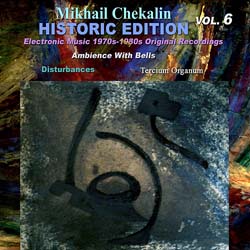 |
|
MCD1011 Dissonata [1989]
For More Information
Mikhail Chekalin
With the album Dissonata, Mikhail
Chekalin continues his post-symphonic musical tradition, transcending his
experimental 70s and 80s period. It was recorded in one session in 1989, at a
studio located in the former summer residence of Lawrence Beria in Sokolniki,
Moscow. Later individual overdubs were done in real time on analog tape
recorders. The central piece "The Dream to the Accompaniment With Voice" does
not include any overdubs.
After recording, two different masters were
produced. The first master became the score of a movie of the same name,
released in 1990. This movie was especially conceived for Dissonata
to serve as a tapestry of musical video art. However, this CD release is not a
soundtrack. The short fragments from the second (and main) version of the master
tape appeared on vinyl (1991) and CDs (2000). This MIR Records edition presents
the first complete release of this stunning work.
One of the protest forms of the post-WWII generation
of avant-gardists (period of Stockhausen and Boulez) was to abandon the
classical forms of music, as well as classical terminology. Thus Boulez one
and only composition called "Sonata" is not a sonata by definition. The
generation of the 70s & 80s however, reverted to classical forms and names.
Being one of the important artists of his generation, Mikhail Chekalin,
nevertheless, continues the tradition of protest in the spirit of the
avant-gardists. He continues to break down boundaries, but today utilizes
available technology in search of new multi-dimensional orchestral forms,
thereby creating a new poly-instrumental form of electronic music and
performance.
In the 1980s, rock music lost its protest component
almost totally, and electronic music was becoming more and more like decorative
wallpaper and entertainment. Chekalin then broke away from any form, working
instead in opposition to the common stereotypes and associations with electronic
music, and the aesthetics of the electronic music mainstream.
|
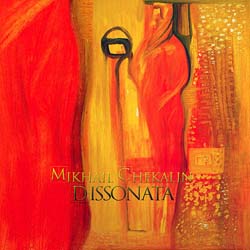 |
|
MCD1012 Music for Film [1989]
For More Information
Mikhail Chekalin
Music For Film represents a
distinctive achievement in Mikhail Chekalins career that stands apart
from his other works. It was not conceived for any particular film
per-se, but music created instead as a template filled with powerful
sonic imagery that would enable listeners to create their own movies of
the mind. Previously Chekalin had created audiovisual soundtracks for
art galleries and installations, but this album was a different musical
challenge.
It turned out to be incredibly successful, with each of the four tracks
creating a distinct musical tapestry of layered synthetics, percussion
and voice that transcend the boundaries of traditional soundtrack
classicism. In fact, later in 1991, the music was used in a 6-chapter
film series examining the early 20th Century historical transition
period from Tsarist Russia to the Soviet Union.
|
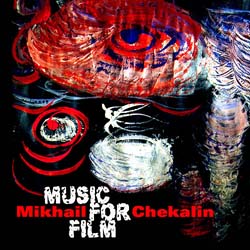 |
|
MCD1013 Existentions [1990]
For More Information
Mikhail Chekalin
The album title track for this work by
Mikhail Chekalin is one of his most powerful post-symphonic landscapes.
With a running time of 56+ minutes, it literally reverberates and
undulates, resulting in a musical kaleidoscope overflowing with swirling
tone colors of pulsating electronic sound.
The albums other two tracks, Reflections 1 & Reflections 2, exhibit
a bit more classical influence incorporated into spatial electronic
soundscapes that venture off into free-form synthetics at various points
in Part 1. Part 2 exhibits a bit darker tone. The music is more
impressionistic, inhabited by deep bass voices and spatial, laser-like
electronics with spatial effects inhabiting the mix. All 3-tracks
combine to create a wonderfully surreal listening experience.
|
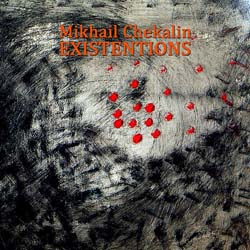 |
|
MCD1014 Reflections [1990]
For More Information
Mikhail Chekalin
Reflections may be the most
beautiful album Mikhail Chekalin has created. Composed of 6-movements,
each creates a slightly different sonic ambience, symphonic in
structure, yet divergent in stylistic tendency.
The common denominator is a vibrant sense of flowing arrangements and
rich melodic themes. He incorporates into the various pieces, spatial
jazz inflections, dramatic, at times jarring symphonic arrangements and
electronic soundscapes with occasional dissonance. This combination of
elements serves to jolt the listeners consciousness into a higher state
as the musical flow shifts gears dynamically. The music on the album
casts an enchanting musical spell, compelling you to listen again.
|
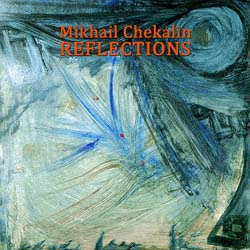 |
|
MCD1015 Double Album-Vol. 1 A New Age Symphony [1992]
For More Information
Mikhail Chekalin
MCD1016 Double Album-Vol. 2 Identifications [1992]
For More Information
Mikhail Chekalin
This ambitious Double CD set offers an encyclopedic sampling of
Chekalins eclectic musical approach centered on his philharmonic
electronic music approach circa the late 1980s-1990s. The music he created
during that era featured an extensive range of styles and genres.
Disc 1, titled A New Age Symphony, is comprised of 11 tracks that run the
stylistic gamut from purely electronic to piano concertos and at times a post
progressive symphonic rock sound. The fusion of styles and themes he
creates offers listeners a distinctly Chekalin conceptual listening experience.
His mastery of diverse styles and musical disciplines is at times staggering.
Disc 2, Identifications, is comprised of 18 tracks that demonstrate how
Chekalin compositional style that fuses of many disparate musical parts can at times make for a bizarre and
completely unique, conceptual whole. Here as on Disc 1, he combines a multitude
of music influences: beautiful vocalizations and symphonic arrangements filled
with unique synthesized saxophone imitations, hard rock elements, avant-garde
jazz rock, rave and hints of techno, along with experimental and bizarre
thematic arrangements. In the end, his alchemization of dissimilar sounds paints a
vivid and unique sonic tapestry that is distinctive and hangs together beautifully.
|
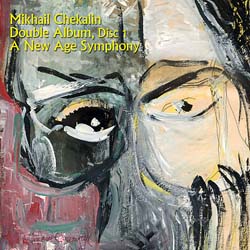
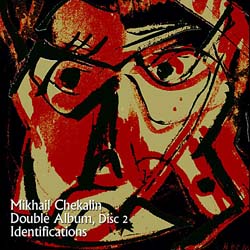 |
|
MCD1017 In Concert I (w/ Alexander Eisenstadt) [1993]
For More Information
Mikhail Chekalin
Alexander Eisenstadt is a musician from the
Moscow underground circa the late 1970s and early 80s who led of his own
jazz-rock group. In spite of being close friends with Mikhail Chekalin
for many years, they never played together back then. By the early 90s,
Mikhail had gained some amount of recognition when his records began to
appear on the Melodiya label, as well outside Russia as well. Western
critics took notice and recognized him as one of Russia�s radical
innovators.
Alexander was musical director at a prestigious and famous theater in
Moscow. He wrote music for films and performances. By 1993 however,
neither of these two pioneers of the Moscow underground felt they had
achieved their due recognition. There was a short window of modest
change and freedom in the late 80s and very early 90s. In this era a few
belonging to the avant-garde and progressive artistic wing of Moscow
gained recognition. Then the situation grew worse.
|
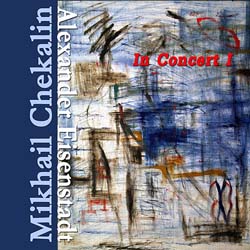 |
|
MCD1018 In Concert II (w/ Alexander Eisenstadt) [1993]
For More
Information
Mikhail Chekalin
In the early 90s, Chekalin responded to the
invitation of his old friend Alexander Eisenstadt who organized two
concerts at the House of Artists and Performers (CDRI) in Moscow. The
musical atmosphere of these shows echoed back to a new confluence
between old epochs and new civilizations. These live records were never
released, or broadcast. This MIR Records In Concert I & II
Dbl CD is the second presentation of both concerts since these very
first and only performances. |
 |
|
MCD1019 Ad Marginum [1996]
For More Information
Mikhail Chekalin
The Ad Marginum Suite consists
of 32 pieces, selected and restored by Mikhail Chekalin from DAT tapes.
Each track symbolizes one of the todays facets of contemporary music.
Here Chekalin exhibits his mastery of sophisticated tricks on Korg and
Yamaha. He makes use of synthesizer, treated guitar and bandoneon to
striking effect. The musical result is a fascinating surreal musical
tapestry created by a virtual one-man orchestra. |
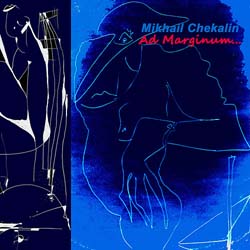 |
|
MCD1022 The PostElectric Symphony [2007]
For More Information
Mikhail Chekalin
The PostElectric Symphony is
an organic Live-Non Stop instrumental opus that captures the essence
of Chekalins improvisational tendencies perfectly. In an age where art
and music have come to embody the worship of commodity, replicated
endlessly. Chekalin has created with this recording a truly spontaneous
burst of creativity. His mastery of the electronic idiom, his jazz
tendencies and post symphonic style blend perfectly as the music weaves
a shamanic spell over the course of its 78:44. The album is a protest
against postmodernism posing as conformity, posing as true art and as
such it
exemplifies futuristic post-electronic music. |
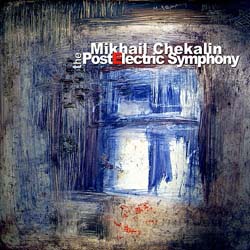 |
|
MCD1023 Post-Realism Vol. 1 [2008]
For More Information
Mikhail Chekalin
Post-Realism Vol. 1 initiates a
musical initiative by Mikhail Chekalin to reincarnate realism - not
socialist realism, but in fact neo- realism and surrealism in tandem.
These albums could be classified Post 21st Century Classical Music.
They offer compositions that are profoundly powerful, where assonance
fuses with dissonance. Where music combined with pure sound comingles to
achieve surreal effect in an attempt to obliterate any sense of
pretending to be a dedicated follower of fashion. |
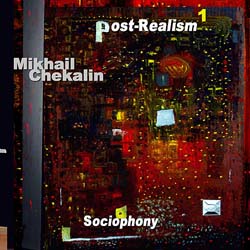 |
|
MCD1024 Post-Realism Vol. 2 [2008]
For More Information
Mikhail Chekalin
Post-Realism Vol. 2 continues
Chekalins musical attempt to revive realism - not socialist realism,
but in fact neo-realism and surrealism in tandem. The music of both albums could be
classified Post 21st Century Classical Music. They offer
profoundly powerful
compositions, where assonance fuses with
dissonance. The music, combined with pure sound comingles to achieve surreal effect, attempting to obliterate any sense of pretending to be a dedicated
follower of fashion. |
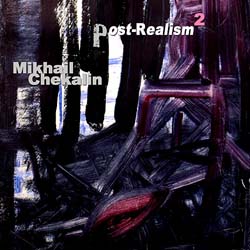 |
|
MCD1028 Avoiding the Desire for Cutting And Piercing Objects [1998]
For More Information
Mikhail Chekalin |
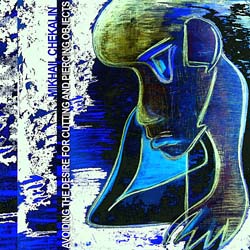 |
|
MCD1029 Saturn [2000]
For More Information
Mikhail Chekalin
Saturn
is certainly a special album in the discography of Mikhail Chekalin.
Recorded in 2000, he dedicated it to his late father Gennady Chekalin
who was one of the main aeronautical engineers in the Soviet Union. His
father was instrumental in development of the Saturn rocket, used to
launch the first powerful telescopic satellite into space.
The music is some of Chekalins most powerful. On Saturn,
he creates a highly synthetic, spatial soundscape filled with layered
melodies, power surges and dense melodies, to create an evocative and
emotional listening experience. |
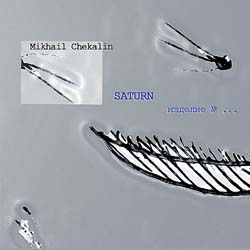 |
|
MCD1031 Meditations for Prepared Electric Organ Vol. 1 [1983]
For More Information
Mikhail Chekalin |
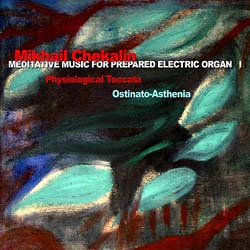 |
|
MCD1032 Meditations for Prepared Electric Organ Vol. 2 [1983]
For More Information
Mikhail Chekalin |
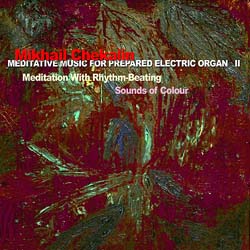 |
|
MCD1034 Between Spring And Autumn by Stealth [1986]
For More Information
Mikhail Chekalin
Between Spring And Autumn By Stealth
(1986) is the beginning of the primary period where Chekalin fully
developed his idea of post-symphonic music. Perhaps his most orthodox
neo-symphony, an 11-part work, the electronic melodies and themes he
incorporates into the full composition are powerful, and at times
beautiful. The result is the creation of a wonderful listening
experience. |
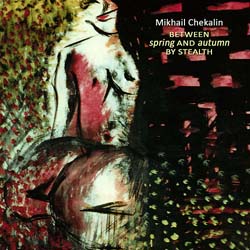 |
|
MCD1036 Green Symphony/ Borderline States [1988]
For More Information
Mikhail Chekalin
The albums
Green Symphony (1987) &
Borderline States (1988) saw his use of electronics become more
spatial, surreal and darkly melodic. The overall tone is more somber
with hints of dissonance beginning to become assimilated into his
evolving style. This 2 on 1 CD pairs them up to create a very unique
cerebral
listening experience. |
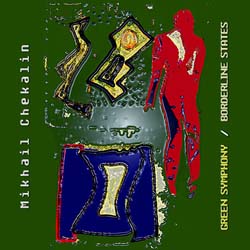 |
|
MCD1037 Symphony-Phonogram [1989]
For More Information
Mikhail Chekalin
Chekalins album
Symphony-Phonogram (1988)
demonstrates his efforts to creating an aggressively more avant-garde musical
approach with themes become far more free from and experimental
instrumentally. Thematically his compositional sense of poly-stylism
and the grotesque are far more developed here. |
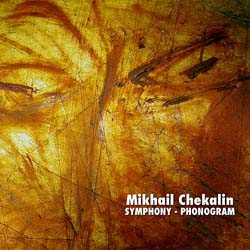 |
|
MCD1038 Concerto Grosso [1989]
For More Information
Mikhail Chekalin
These two works, Concerto Grosso 1 & 2
(1989), are symphonic extravaganzas. They represent perhaps the
ultimate expression of Chekalins modern stylistic reincarnation of
Shostakovich and Shnitke, resulting in his own unique Post-Symphonic
musical conception coming to full fruition. |
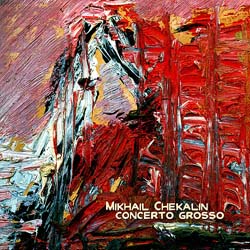 |
|
MCD1039 Supremus Continue [2012]
For More Information
Mikhail Chekalin
Supremus Continue
is the brand new album by Mikhail Chekalin, recorded and released in
2012. The album title track is a stunning synthetic excursion into
spatial free jazz and myriad layers of celestial electronica.
Continue - Continue co-mingle tripped-out beats, scat
and dense electronica into mind candy for movies in your brain. The
album closer, Through the Looking Glass is a powerfully
dynamic, dark symphony with layered synthe and dramatic chord structures
that electronically trail off into oblivion. In some the music of
Supremus Continue, feels like an attempt at musical
transcendence, of leaving the flesh behind and moving on to the realm of
the spirit. It's perhaps Chekalins most mature and fully realized album
to date.
|
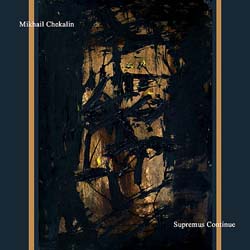 |

Chekalin Photo Archives 1989
A History of Light & Sound 1970s~1990s
In the West, the life of an artist has not always been easy but there has
always been some garage, studio, and some company or arts patron who lent
them their ear and sometimes the capital to make their dream happen. Even
for those opting out of the trek down the yellow brick road to artistic
commerce and the dream of stardom, it was always relatively inexpensive for
creative types to acquire modest technical and equipment necessities to do
their own thing for the sake of their art. Alternatively, imagine if you
can, life in the Eastern Bloc, living in a land not so full of good and
plenty, where a watchful eye was always peering just over your shoulder at
what you are doing.
After more than 3 decades the works of Mikhail Chekalin are now finally
seeing the light of day in the Western world as perhaps he had always hoped
for, and dare I say at times would have never imagined possible as he did
his thing in the former USSR.
MIR Records was established as a side project devoted to exposing
the Music, Art and Film of Mikhail Chekalin. To date 3 CDs and 4 DVDs have
been produced featuring not only his latest, but also historical works from
his archives that have been preserved over the past 35 years.
To shed some light on the actual man and the road he travelled in terms of
creating his art, Mikhail shared the following insights with Eurock about
his life, their message, and the social/ political conditions under which he
worked to create his unique and diverse works of art.
Experimental Electronic Music & Light Graphics Studio
Is it true that the KGB destroyed your film studio?
Well that would seem to be an
oversimplification, of sorts, to state that it was the KGB that dumped
scalding water into my studio located in the basement floor. That did happen
however in 1987 and effectively put an end to my studios activities (it
was not a film studio exactly speaking, but more a multi-dimensional
art-work enterprise-workshop engaged in a variety of artistic activities
which even included teaching plastic & graphic arts to young children (to
provide a legitimate reason to exits of a formal sort). That destructive act happened just when the
Studios acquired a legal status in its own right at last and had been
officially recognized.
It would not seem to be too far-fetched however to consider this terminal
event as an effect harking back to its cause in the year 1979 when I had
been asked to present myself at the KGB, on the very same street where it is
located now. At that point it was my professional career that they tried
their best to stop. It was years later when Glasnost had come to pass that I
became fully aware why they should have felt interested in me as I was
always far enough from politics.
In the 1990s it was made known to the general public that the people at
Lubjanka Street had got their direct orders from Yuri Andropov to
investigate each and every promising young person involved in all kinds of
creative activities and especially in liberal arts, such as music, art and
literature - to make sure of their ideological predisposition - that is,
that they were not up to something. And you need not be too surprised at
the apparent immensity of the task as their authority was absolute, and
their reputation is legion.
The reason underlying it was that the Soviet cultures predominant function
was a strictly conservative-protective one and modernity, or popular culture
was become exclusively associated with the West. The West during the Cold
War Epoch was therefore a potential enemy at the very least, an actual enemy
in terms of image and influence by all means.
So you can imagine their attitude towards young people who just liked to
dance to good rock-n-roll music and to show off wearing long hair and blue
jeans as a mark of social prestige in this country during the time of life
behind the Iron Curtain. It was mostly highly placed state & party
functionaries who were free to go abroad any time. Those like me, interested
in Western culture in broader sense as it were, having always perceived the
underlying unity of cultural heritage (liking to dance and to show off just
as much as the next man, mind you!) naturally fell indiscriminately within
the range of potentially political suspects.
Those at KGB were no fools however, they sorted people out deftly &
carefully, putting lambs aside from the black sheep - and black sheep were
destined for Afghanistan to serve their international duty, in the idiom of
the epoch, or dispatched to mental clinics if they happened to be rejected.
Their only serious lack of judgment proved to be their failure to recognize
that those of real intellectual and creative potential represented a
national treasure rather than a national menace. Thus their earnest efforts
went drastically askew, aiding the enemy in the long run, as the Soviet
Union is no more as everyone now knows...
Save for this finer point they knew their trade quite well, they would not
have been even rude to you, during the later epoch of Soviet Empire, they
made use of sophisticated methods revealing their familiarity with recent
developments in science... to put it shortly: they didn't break your bones;
they just broke your life. For you became a marked man, for the rest of
your days.
After my visit with the KGB, if I happened to have been asked for an
interview by some Western newspaperman, the very next day someone from among
my acquaintances would call to advise me, in no uncertain terms, that I
should stay out of it. If I were to reply that I didn't give a damn about
their well-meant advices, then I used to told, so, well, my music has been
tape-recorded, and tapes circulated, I was surely aware that unsanctioned sound-recording activity is persecuted by law...
Thus the very music I made became cause for persecution when I had been
expelled from the world of academic achievement as the phrase goes, and
actually deprived of any legal opportunity to realize my work (what with a
state monopoly stranglehold on sound-recording facilities) - all due to that
evil visit to Lubjanka Street. It went reverberating on and on.
Even an opportunity to travel abroad was denied me. When for a while I
performed as a keyboardist in a rather famous and quite official Soviet
group The Samotsvety they went on tours and I had to be left behind. I
went abroad in 1988 for the first time, to Prague, and with my Studio...
During what years did you do music & films in your studio?
My Studio (founded in 1978) actually existed up to 1993, until being
destroyed
by this act of sabotage, (an accident of boiling water, when the central
heating allegedly burst into the basement floor). My studio just happened to
be located at the heart of the downtown district, and thus presented a big
attraction for those who were after immovable's and possessed of ways and
means to get what they wanted.
Films that I made use of as art-video material for these DVDs have been
executed with my own assistance, we worked as a team, as it were, but they
haven't been actually produced by my Light Graphics Studio - so there are
people whom I named in credits of these DVD videos: art producers,
cameramen, cartoonists as concerns the animated films, scriptwriters etc.
Technique
& History of the Films
Did
you compose & perform all the music as part of the concept of the videos?
The Light and Sound collages were filmed at live installations during the
1970s and 1980s. All music was performed by me. The live symphonic concert by
the St Petersburg Philharmonic was officially filmed with the orchestra
conducting my music.
That
long film with me and the city images features edited material so as to
transform it into a pure visual art product not requiring any verbal
reinforcements. I also re-titled it after one of the longer pieces used in
it Music for the Voice, Synthesizer, Drums & Piano.
As
I reconsider this in retrospect this basic concept or rather all-permeating
feel of it could be construed as a work that evokes a feeling of
estrangement, of dire alienation, of displacement almost literally embodied
by that piano cast out upon the snow and that miserable old bones sweeping
most absurdly around it (the scene has not been staged, by the way, it's a
documentary, of sorts).
The animated cartoon entitled Exit is included here with the consent
of the
producer H. Porokova. The animated cartoon studio that
produced it doesn't exist any more.
This
film was based on Russian folklore, in a sense, or rather on world
perception appropriate to folklore - which with us Russian folks tends to
brood and gloom.
What
with the desolation of life in the depressingly lowland area of Central
Russia, not to mention that snow eternal and general lack of sunshine, we
are much prone to introspection bordering on total introversion.
This
animated film touches upon the basic issues in the course of human events -
life and death, hope and fear, perseverance in the face of total
senselessness and despair, etc...
The
verbal message in the film is not absolutely literal and is conveyed, I
trust, clearly enough by non-verbal means such as the very intonations and
the context of the imagery. So I think the language isn't going to be major
barrier to understanding the overall context and concept.
In
essence, our Russian folklore-based perception tends to view somewhat
skeptically the extent to which our Good Lord as Supreme Authority is
willing to be annoyed by us petty mortals. This is the message of the
fragment with God answering a prayer, seemingly quite happy with himself. So I
suppose you might say that a social/ realist attitude is reflected in a good
many of these films and my work...
|


 reviews features podcasts email bio
reviews features podcasts email bio





























































































